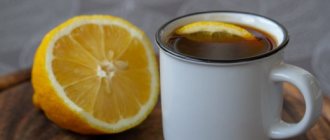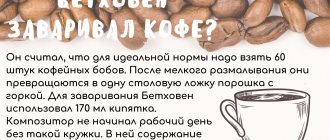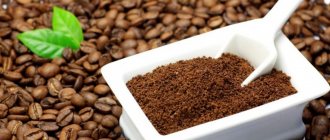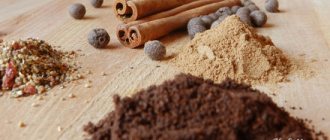Landing
The coffee bean is the seed for planting the coffee tree. Dried, roasted and ground, it is used to brew coffee. Unprocessed grain can be used for planting.
Coffee beans are planted in large tanks and left in dark rooms. The sprouts are watered regularly and kept away from sunlight. When they become strong enough, they are transplanted to plantations. This is usually done during the rainy season so that there is enough moisture in the soil to support the roots.
Harvesting
It will take three to four years for the tree to begin bearing fruit. Unripe coffee berries are green in color. Depending on the variety, they turn bright or dark red when ripe and ready for harvest. They ripen faster in low mountainous areas and at high temperatures. Usually the crop is harvested once a year. In countries where flowering occurs twice a year, such as Colombia and Kenya, coffee is harvested twice a year.
Coffees harvested early or late in the season have a weak flavor, while mid-season coffees harvest bold flavor profiles. For this reason, the best roasters purchase their coffee mid-season.
In most countries, manual labor is used to ensure the ripeness of the berries. The fruits ripen at different times and it may take up to three pickings to fully harvest the entire crop. In countries with relatively flat landscapes, such as Brazil, this process takes place using machinery, which certainly makes the job easier.
Harvesting is done in one of two ways:
- Stripping - all the berries are removed from the branch at the same time by hand or using equipment.
- Picking - only ripe berries are removed and only by hand. Farmers walk around the trees every 8-10 days, choosing only the ripest berries. Due to the fact that this method is labor-intensive and more expensive than stripping, it is used primarily for collecting high-quality Arabica beans.
A good harvester will collect 45-90 kilograms of coffee cherries per day, which can then be used to produce only 10-20 kilograms of coffee! The number of berries collected by each picker per day is weighed, and labor is paid based on the results.
Types of industrial coffee
There are more than 90 species of plants belonging to the coffee genus (Coffea). But only two of them are used on an industrial scale: Arabica and Robusta. According to various estimates, these two types account for up to 98% of the coffee produced. This volume is divided in the ratio of 69% - Arabica, 29% - Robusta. Other types of coffee account for 2% of world production.
Arabica
Coffea arabica L. - Arabian coffee (type of grain - "Arabica"). Arabica is the most common type of coffee. The type of coffee tree, Coffee Arabian, from which the beans of this variety are obtained, grows at an altitude of 900 to 2000 meters above sea level. The beans, as a rule, have an oblong shape, a smooth surface, a slightly curved S-shaped line, in which, after light roasting, unburnt particles of the coffee berry usually remain.
| Original name | Region | A comment |
| Arusha | Mount Meru in Tanzania and Papua New Guinea. | This is not a specific variety, but Typica or French Mission, grown in this area with characteristic processing conditions. |
| Bergendal, Sidikalang | Indonesia | Both are species of Typica that survived an outbreak of “leaf rust” (the fungus Hemileia vastatrix) in the 1880s; most other species in Indonesia were then extirpated. |
| Blue Mountain | Blue Mountains, Jamaica. Also grown in Kenya, Hawaii, Haiti, Papua New Guinea (where it is known as PNG Gold) and Cameroon (where it is known as Boyo). | A unique Typica mutation that gives coffee berries resistance to disease. |
| Bourbon | Reunion, Rwanda, Latin America (hereinafter referred to as LA). | Around 1708, the French planted coffee on the island of Bourbon (now Reunion), located in the middle of the Indian Ocean. Their coffee mutated slightly before being planted throughout Brazil by the late 1800s and eventually spreading throughout Latin America. Bourbon produces 20-30% more berries than Typica varieties. El Salvador is known as the “Bourbon Country”. |
| Catuai | LA | A hybrid of Mundo Novo and Caturra varieties, bred in Brazil in the 1940s. |
| Catimor | LA, Indonesia, India | An interspecific hybrid created from Timor and Caturra coffee. It was created in Portugal in 1959. In India, this variety is called Cauvery. |
| Caturra | Latin and Central America | This varietal coffee was developed by the Alcides Carvalho Coffee Center (Centro De Cafe) at the Institute of Agronomy of Campinas (IAC), São Paulo State, Brazil. In 1937, IAC received seed samples of genetic material obtained on the border of the States of Minas Gerais and Espirito Santo. It was created from the red and yellow Caturra varieties. These two varieties arose from a natural mutation of Bourbon Red, a tall coffee bush found in the Serra Do Caparao, now a mountainous National Park northeast of the city of Rio de Janeiro. Cattura is more productive than Bourbon, shorter and with less spacing between branches. A relatively recently selected botanical variety of the Coffea arabica species that typically ripens faster, produces more coffee, and is more disease resistant than older traditional Arabica varieties. |
| Charrieriana | Cameroon | This is a recently discovered variety from Cameroon. Its popularity has not yet reached commercial proportions, but it will likely do so over time. |
| Colombian | Colombia | Coffee was first introduced to Colombia in the early 1800s. Today the varieties grown here are Maragogipe, Caturra, Typica and Bourbon. Freshly roasted Colombian coffee has bright acidity, a dense body and a special aroma. Colombia accounts for about 12% of the coffee market (by value) in the world, third in volume after Vietnam and Brazil. |
| Ethiopian Harrar | Ethiopia | From Harar region, Ethiopia. Known for its complex, fruity taste, which is reminiscent of dry red wine. All three Ethiopian varieties, including the bottom two, are trademarks with rights owned by Ethiopia. |
| Ethiopian Sidamo | Ethiopia | Also from the Sidamo (now Oromia) region of Ethiopia. |
| Ethiopian Yirgacheffe | Ethiopia | From the Yirgachefe area of the Gedeo Young Peoples Zone. |
| French Mission | Africa | The French Mission is a Bourbon planted in East Africa by French missionaries around 1897. |
| Geisha / Gesha | Ethiopia, Tanzania, Costa Rica, Panama, Colombia, Peru. | Geisha or Gesha, a variety grown in the highlands of Boquete, Chiriqui Province, Panama. Highly prized at auction and achieving high prices. Originally from the village of Gesha, Ethiopia. It was planted in the 1950s as a fungal disease resistant variety, and again in the early 2000s. It is one of the most expensive types of coffee. |
| Guadeloupe Bonifieur | Guadeloupe | |
| Hawaiian Kona | Hawaii | Grown on the slopes of Hualalai Volcano and Mauna Loa in the Kona region on the big island of Hawaii. Coffee first came to Hawaii in 1825. |
| Java | Indonesia | Coffee from Java, Indonesia. This coffee was once so popular in the trade that the word “java” became a slang term for coffee. Java refers to any coffee produced in that region, not a specific variety. That is, it can be Arabica, Robusta, or interspecific hybrids. |
| K7 | Africa | A Kenyan variety bred from French Mission and Bourbon in Muhoroni, Kenya. |
| Maragogipe | LA | Maragogipe is considered a natural mutation from Typica. It was first discovered near Maragogipi, Bahia, Brazil. The fruits of this variety are large. |
| Maragaturra | LA | Maragaturra is an artificial hybrid of Caturra and Maragogipe. The purpose of its creation was to obtain the aroma of Maragogype and the high yield of Caturra Varietal. |
| Mayagüez | Africa | Cultivated from Bourbon in Rwanda. |
| Mocha | Yemen | Yemeni coffee, once traded through the major port of Mocha. |
| Mundo Novo | LA | A hybrid of Bourbon and Typica, created in the 1940s. |
| Orange, Red Bourbon | LA | Selected from a spontaneous mutation of Bourbon. |
| Pacamara | LA | A hybrid between a mutation of Pacas, Bourbon and Maragogype. Developed in El Salvador in 1958. |
| Pacas | LA | A naturally occurring Bourbon mutation found in El Salvador in 1949. |
| Pache Colis | LA | Hybrid of Pache Comum and Caturra. The variety bears large fruits. |
| Pache Comum | LA | Typica mutation first encountered in Santa Rosa, Guatemala. |
| Ruiru 11 | Kenya | Ruiru 11 was developed in 1985 at the Kenyan Coffee Research Station. The variety has increased disease resistance, but a less intense taste. |
| S795 | India, Indonesia | The Arabica variety most used in industrial production in India and Southeast Asia. S795 is known for its balanced taste and aroma. It was released in the 1940s by crossing Kents and S288. |
| Santos | Brazil | The name is generally used as a term for Brazilian coffee rather than a specific Arabica variety. The name comes from the port of the same name in Brazil, where they sold coffee considered to be of higher quality than other “Brazilian coffee”. But overall, Santos is a variation of Bourbon. |
| Sarchimor | Costa Rica, India | Interspecific hybrid. A hybrid of the Costa Rican Villa Sarchi and the Timor variety. Because of its Timor parent, Sarchimor is quite resistant to leaf and trunk rust diseases. As in Costa Rica, it is grown in India. A hybrid of the Costa Rican Villa Sarchi and the Timor variety. The variety is quite resistant to leaf diseases and stem borer. |
| Selection 9 (Sln 9) | India | Hybrid of Ethiopian Tafarikela and Timor variety. |
| SL28 | Kenya | Developed by Scott Labs in Kenya from the drought-tolerant Tanganyika variety introduced from Northern Tanzania in 1931. Excellent taste and moderate acidity. |
| SL34 | Kenya | Developed by Scott Labs in Kenya from French Mission. It is inferior in taste to SL28, but also has high quality. |
| Sulawesi Toraja Kalossi | Indonesia | Sulawesi itself is not a separate coffee variety. This is the s795 variety, but grown at high altitudes on the island of Sulawesi, Indonesia. Kalossi is a small town in the center of Sulawesi that serves as a coffee harvesting area, while Toraja is a mountainous area where coffee is grown. Sulawesi has a rich flavour, full-bodied with well-balanced acidity. Sulawesi itself is not a coffee variety. |
| Sumatra Mandheling and Sumatra Lintong | Indonesia | This is not a specially bred variety, but coffee grown in a region with a specific processing style. |
| Timor, Arabusta | Indonesia | Interspecific hybrid. Timor is actually not quite an Arabica, but a hybrid of two types of coffee - Arabica and Robusta. It was found on the island of Timor around the 1940s, and began to be cultivated for its resistance to leaf rust (to which most Arabica coffees are susceptible). Another hybrid between the two species is called Arabusta, but it is usually found only in Africa. |
| Typica | The whole world | Typica has been known since Malabar times, and was later brought to Indonesia by the Dutch. He later reached the West Indies and the French colony of Martinique. The variety is the ancestor of many other varieties around the world. |
| Uganda | In Uganda itself, Robusta is mainly grown. High-quality Arabica beans are called Bugishu. | |
| Brutte | It was developed in India. It is grown at an altitude of 1500 m above sea level, which in itself is a good indicator. They are distinguished by a higher content of tannins up to 14-15% and trigonellines 1.5-1.7%. |
There may also be other varieties, but basically everything that has other names are mixtures (blends) of the below and above varieties/species, or are assigned names based on classification and/or place of origin. For example, in stores you can find coffee called Kenya AA, where AA is not a variety, but a sign of the highest quality in this country, based on the size of the beans - beans are selected measuring 17/64 or 18/64 inches (sieve No. 17 or No. 18) . Under AA, any Kenyan variety in its pure form, as well as mixtures, for example, from SL28 and SL34 can be sold. For example, in stores you can find coffee called Samburu AA, where the name is the region of growth, and the coffee itself is a mixture of SL28 and SL34.
Examples of prices for a 50 kg bag at an auction in Kenya:
- AA – $377.20
- AB – $317.42
- C – $239.19
- PB – $308.93
- T – $183.70
- TT – $252.51
- UG1 -$198.06
- UG2 -$104.81
- UG3- $116.63
Robusta
Coffea canephora Pierre ex Froehn. - Congolese coffee (type of bean - “robusta”). Vietnam is the world's largest producer of Robusta coffee, and its share of all coffee production in Vietnam is 97%.
Robusta is generally considered a less refined coffee bean in terms of aroma. At the same time, it contains more caffeine, and is also often used in espresso blends, which allows for better coffee crema and reduces the cost of the mixture. The species of coffee tree, Coffea Congo, from which these beans are obtained, is fast-growing and more pest-resistant than coffee arabia, and grows from approximately 0 to 600 m above sea level, primarily in the tropical regions of Africa, India, Sri Lanka and Indonesia. The grains have a round shape, color - from light brown to grayish-green
Other types, such as Liberica, Arabusta and Excelsa, are not of industrial importance and can be used for additional flavoring. For example, Liberica has a very strong aroma, but not such a pronounced taste, so it is sometimes used to flavor cheap Robusta.
Treatment
After harvesting, processing must begin as soon as possible to prevent spoilage of the berries. Depending on the country and local resources, coffee is most often processed in one of two ways:
- Drying is an ancient method of coffee processing, often used in countries with limited water resources. Freshly picked berries are placed in the sun. To prevent the berries from spoiling, they are turned over several times during the day, and covered at night and during rain to prevent them from getting wet. This process can continue for several weeks until the water content in the berries is reduced to 11%.
- Washed - begins with removing the pulp from the grain, so it is simply dried in its own shell, the so-called “parchment”. First, the freshly picked berries are sent for processing in special equipment, where the pulp is removed. Next, the grains are grouped by weight, passing through water streams. Light grains go up, and heavy grains go down. So, the grains pass through several of these sorting drums with water, where they are separated by size. After sorting, the grains are placed in large tanks of water. Various factors—bean quality, climate, and altitude—affect how long the grains remain in these tanks. As a rule, they remain there for 12-48 hours, after which the grains pass through water streams again and are sent for drying.
In fact, these are not all processing methods, but only the main ones. You can learn more about all types of processing from our separate article on this topic.
Manufacturing options
The production of coffee (instant coffee, granules) is a complex process. Two methods of its manufacture are used. Initially, they resorted only to the high-temperature method, but recently the low-temperature method has been increasingly used. Each of these technologies has a number of features.
High temperature method
Instant coffee is produced using the following technology:
- Substandard beans, as well as leftover coffee products, are roasted and crushed. The resulting particles do not exceed two millimeters in size.
- The resulting product is filled with water and then processed under pressure of fifteen atmospheres. This process takes about four hours. The temperature is maintained at a high level all this time.
- At the next stage, the mixture is cooled, filtered and dried. In this way, it is possible to obtain a mass that looks like powder (the so-called powdered coffee).
- When used, the resulting product gradually clumps into lumps and sticks to the spoon. In order for it to acquire an attractive appearance, it is subjected to another stage of processing. The sublimate is churned into granules or processed with steam. Due to this, it is possible to avoid the collection of particles into dense formations.
- Only after this the product is finally dried.
It has been noted that granulated coffee looks much more attractive than powdered coffee. The particles do not stain dishes or stick to them.
Therefore, the cost of such products is higher, although in essence they contain the same ersatz powder.
Naturally, with prolonged exposure to high temperatures, grains lose their characteristic tart taste and pleasant aroma. To verify this, you can try boiling ground grains for three hours. It's unlikely that anyone will like this drink.
To improve the taste of the product, at different stages of production the extract is processed and various flavoring additives, oils and fragrances are sprayed. Freeze-dried and granulated coffee is additionally colored. Due to this, the particles acquire an attractive appearance.
Low temperature method
If instant coffee is produced using a low-temperature method, this process is carried out in several stages:
- First, the coffee beans are cleaned and crushed, after which they are treated with hot water under pressure.
- At the next stage, the resulting mass is deep frozen.
- The ice that is obtained is crushed and sent into a vacuum tunnel. There, the ice component evaporates, and the stage of water formation is passed.
The product that can be obtained by this method is called freeze-dried (dehydrated). The cost of such an ersatz is significantly higher. This is due to the fact that the technology is quite expensive. At the same time, the manufacturer manages to create significantly more finished products, which are subsequently sent for sale.
Expensive varieties are distinguished by the addition of oils and flavors of natural origin. They are obtained from coffee beans. Cheap varieties are produced using synthetic additives. In both the first and second cases, the raw materials are cheap varieties of beans, rejected material, and the remains of coffee production.
It is worth noting that the exact process of making instant coffee is classified. Therefore, it is impossible to know exactly what people actually drink under the guise of an instant drink.
Drying
If the beans have been processed using the washed type of processing, they must be dried until the moisture content does not exceed the same 11%. These grains are still covered with parchment. Drying is carried out either on large tables, where they are regularly turned over, or using equipment.
All the dried beans, called unhulled coffee beans, are taken to a warehouse in jute or sisal bags where they will await their turn for export.
Cleaning
Before sending grains for export, producers carry out final processing of the grains. It takes place in three stages:
- Removing parchment. The parchment is removed from washed grains, since everything else was removed during the processing stage. Dry processed grains are cleared of all dried pulp.
- Polishing. An optional process by which all remaining fine particles are removed from the grain. While polished grains are considered better than unpolished grains, in reality there is little difference between the two.
- Grading and sorting. Occurs based on size and weight. Grains are also graded for the presence of imperfections in color. To determine the size of the grains, they are passed through several measuring instruments. They are also sorted in special equipment with high pressure to separate heavy grains from light ones. Defective grains are selected manually or automatically. Those that do not meet quality criteria (unacceptable size or color, presence of insects inside, excessive fermentation) are discarded. In many countries, both manual labor and equipment are used for this sorting to ensure high quality grains.
How is specialty coffee different from regular coffee?
Specialty coffee is Arabica coffee beans of the highest category. Such coffee is rated on a 100-point Q system even at the green bean stage. It can be considered as such only if its score is not lower than 80 points. The best varieties are rated at 90 points or more. To evaluate coffee, there are Specialty Coffee Associations (SCA) - as a rule, each country of origin has its own association, but the two largest are in America and Europe. Experts evaluate not only the quality of the grain itself, but also study its aroma, sourness, sweetness, aftertaste and balance.
On specialty coffee packages you can find the most detailed information about a specific bean: as a rule, the manufacturer indicates the processing process, variety, harvest date, height of growth, region and even farm. The price of specialty coffee is higher than regular coffee, firstly, because it is selected grain of the highest category, and secondly, there is much less such grain, it is not produced on an industrial scale, therefore, a pack of such coffee costs more. For comparison: 500 grams of Lavazza coffee in a supermarket costs about 500–600 rubles, and a 250 gram pack of specialty coffee will cost between 900–1,300 rubles in Doubleby coffee shops.
Nikolay Chistyakov
co-owner and roaster of Camera Obscura Coffee
Professionals use a 100-point assessment of grain quality and potential, but it is not universal. It allows an individual taster to evaluate coffee before purchasing and compare the ratings of several coffees if the task is to choose from a large number of lots. The assessment is made subjectively and in a given context. They usually say: “Last time this coffee scored 86 points for me.” This does not mean that the same 86 points are in your cup now. This means that the grain has good potential. Some roasters put the score on the packaging, but it's weird, they don't seem to understand the score. Good coffee scores from 80 points. We all try not to go below 85. Highly rated coffee is brought to Russia, but it is very expensive coffee. It is rarely prepared for mere mortals, but is usually used at championships and drunk by staff for cultural enrichment.
Cupping
Cupping - quality and taste testing - is carried out several times in a room specially equipped for this.
First, the cupper evaluates the grains by appearance. Then the grains are roasted in a small laboratory roaster, immediately ground and poured with hot water at a strictly regulated temperature. The first thing a cupper begins to evaluate a drink with is the aroma.
Next, the cupper tastes the coffee in small portions, while trying to cover all taste buds.
Coffee is analyzed not only to determine characteristics and shortcomings, but also to create balanced blends and select the desired type of roast. Experienced cuppers can taste hundreds of different varieties a day and still feel the subtle differences between them.
Production of caffeine from coffee
The alkaloid from coffee beans is obtained in several ways. Each of them has a number of advantages and disadvantages. At the same time, a small amount of caffeine remains in the fruits. The following methods are used:
- Straight. The grains are treated with steam for half an hour, and then with methylene chloride and ethyl acetate. In order to remove residual solvent, the liquid is washed for ten hours.
- Carbon dioxide. The fruits of the coffee tree are soaked in water and transferred to a special chamber. The temperature in it is within seventy degrees. Carbon dioxide is released there under pressure.
- Swiss water. To extract caffeine from beans, sometimes only it is used. The green fruits are soaked in a hot liquid that extracts the aromatic, flavoring and alkaloid substances. After this, the water is passed through carbon filters, which retain the caffeine.
Coffee is an amazing drink. The process of making it is complex and fascinating. To obtain a fragrant, flavorful product, a lot of work is carried out. An error at any stage will lead to loss of quality.
Roasting
Roasting turns green beans into the aromatic chocolate-colored beans that we are used to seeing in stores and coffee shops. Most roasters roast coffee at around 287°C. All this time, the roaster blades constantly mix the grains so that they do not ignite.
When the internal temperature of the beans reaches approximately 205°C, they turn brown and secrete kafeol, an oil contained in the beans themselves. The process is called "pyrolysis"; This is a kind of “heart” of roasting - it reveals the aroma and taste of the coffee we drink.
After roasting, the beans are immediately cooled with air or water. Roasting is usually performed by the importing country because freshly roasted beans need to reach consumers as quickly as possible.
There are 3 basic coffee roasts: light, medium and dark. Light and medium roasts best retain the true flavor of the beans, while dark roasts are bitter and contain the least caffeine.
Historical reference
Origin
The history of coffee is overgrown with legends. One of them says that Ethiopia is considered the birthplace of the coffee tree. And it was opened by the Yemeni sheikh ABD al-Qadir.
Another legend claims that the discoverer was the shepherd Kaldima. He noticed that the goats had eaten the leaves of a wild coffee tree and were beginning to act agitated.
The global recognition of coffee beans began in Yemen. Cultivation of wild plants began in the 13th century. Yemen remained a coffee supplier for 200 years.
Coffee appeared in Europe and North America in the 17th century.
Find out more in the article “What is coffee: the history and homeland of the aromatic drink.”
Varieties
There are 50 varieties of coffee drinks in the world, which can be made from two varieties: Arabica and Robusta.
Arabica grows at elevations up to 2500 m. The homeland of this variety is Africa. The grains are green or purple in color. Trees grow up to 5 m.
Robusta is native to South America. The height of the trees is from 2 to 10 m. Instant coffee is made from these varieties.
Read more in the article “What is Robusta and how is it different from Arabica?”
Producing countries
Coffee producers and exporters in the world include: Brazil (30%), Vietnam (17%), Colombia (12%), Ethiopia (6%), Indonesia (5%), India (4%).
Coffee is also grown in:
- South America - Peru, Venezuela, Ecuador, Bolivia, Paraguay;
- Central America - Honduras, Mexico, Guatemala, Nicaragua, Costa Rica, Cuba;
- Asia - Thailand, Laos, Philippines;
- Africa - Cameroon, Uganda, Madagascar, Angola.
Interesting! Barista - who is he, what is his profession and what does he do?
For a complete list, see the article “Where Coffee Really Grows.”
Preparation
The preparation method affects the taste of the coffee in the cup, so at True Coffee we always list recommended preparation methods for our varieties. What types of brewing are there?
- Pressure brewing (espresso machine, moka, aeropress)
- Soaking (French press, siphon)
- Filter coffee or drip method (Chemex, Hario, Cold Brew)
You can learn more about brewing coffee in our article on coffee drinks and in our brewing guide.
When we started writing this article, we never thought that we would discover so many nuances that need to be described and that we take for granted. This helped us analyze the coffee journey from start to finish and establish a clearer picture of the industry as a whole. We hope that the article was also useful to you and that you learned something new and interesting.
Coffee drinks
Many types of drinks are prepared based on instant coffee. The simplest ones are coffee with milk, cognac, cream, syrup. Cold iced coffee is quite popular, which perfectly invigorates and cools on a hot day. It regularly appears on the menu of summer cafes as a tasty and tonic seasonal drink.
At home, you can make cappuccino using an instant drink without a coffee machine. After all, you no longer need to brew espresso. It is enough to whip the milk well until thick milk foam and combine it with coffee. It is correct to pour coffee into milk.
Coffee has a wide range of uses. Whole roasted beans are used in handicrafts, a prime example being coffee topiary. In cosmetology, coffee extracts are included in mixtures for anti-aging or anti-cellulite wraps. Almost every housewife has tried coffee belongings from the leftovers of a Turkish coffee.
No matter how coffee is produced, it remains the most popular invigorating drink in the world, which excites minds, brings joy and brings people together.
Try our coffee
Mix of grains
Espresso coffee
Blend of 100% Arabica beans. The aroma reveals notes of roasted peanuts and hazelnuts, while the taste is dominated by dark chocolate and walnuts. Soft aftertaste of cocoa and burnt sugar.
Peru
Coffee "Chanchamayo"
Rich and strong coffee with notes of bread in the aroma.
Brazil
Coffee "Santos"
The aroma is dominated by spices and cocoa. The soft nutty-chocolate taste is offset by a slight sourness at the end.
How to distinguish good coffee from bad?
Before ordering a drink at a coffee shop, check with the barista what he brews with today. If the establishment has good beans, then most likely they will be happy to tell you what blend is in the espresso (for example, a mixture of “Brazil” and “Ethiopia”), and if the coffee shop brews an alternative, they will offer several types of beans to choose from.
Feel free to ask questions, find out which variety is more sour or sweeter, and choose what you like best. If the barista’s answer is clear, for example: “We have 100% Arabica coffee,” then most likely it is better to refuse the cup.
When buying coffee beans, it is better to purposefully go to coffee shops or order online. As a rule, coffee in supermarkets, even of large brands, is of rather low quality and has been roasted for a long time, and only freshly roasted beans are suitable for making coffee.
When purchasing specialty coffee, pay attention not only to the country of origin, but also to the region, plantation height and roasting date. Most often, the balance of sourness, bitterness, and richness is indicated on the package, but if you are not yet sure of your choice, you can always ask the barista or seller for advice. As a rule, the websites describe the taste qualities of the grain as accurately as possible, so the choice should not be difficult.











